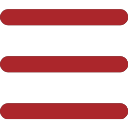


Woven bags, recognized for their resilience, versatility, and cost-effectiveness, serve as indispensable packaging solutions across numerous industries. Yet, the journey from raw materials to the finished product entails a meticulous manufacturing process, with cutting and sewing machines serving as linchpins in this intricate operation. In this comprehensive exploration, we delve deeper into the multifaceted functions and indispensable significance of cutting and sewing machines in woven bag manufacturing.
Woven bags are primarily crafted from polypropylene (PP) or polyethylene (PE) woven fabric, which undergoes a series of intricate processes to transform into the final product. These processes encompass weaving the fabric on specialized looms, treating it for enhanced strength and stability, and ultimately shaping it into functional bags capable of withstanding the rigors of handling, transportation, and storage.
Cutting machines herald the commencement of the manufacturing process, tasked with precision cutting of the woven fabric into panels of predefined dimensions. This step is critical for ensuring uniformity and consistency in the size and shape of the fabric panels, laying the foundation for the subsequent assembly of the bags.
The versatility of cutting machines allows manufacturers to tailor woven bags to meet a diverse array of requirements and specifications. Whether producing standard-sized bags for general packaging purposes or bespoke solutions tailored to specific applications, cutting machines empower manufacturers with the flexibility to accommodate varying customer needs and preferences.
Advanced cutting machines leverage sophisticated technologies such as computer numerical control (CNC) to optimize fabric usage and minimize waste. By precisely cutting fabric panels with minimal margin for error, these machines maximize material efficiency, reduce production costs, and minimize environmental impact—a testament to the synergy between technology and sustainability in modern manufacturing.
Sewing machines assume the mantle of fortifying the structural integrity of woven bags through precise stitching of fabric panels. The quality and durability of the stitching are paramount, as it determines the bag's ability to withstand the stresses and strains of handling, stacking, and transportation. Sewing machines employ various stitching techniques, including lockstitch and chain stitch, to achieve optimal strength and resilience in the seams.
In addition to seam reinforcement, sewing machines are instrumental in incorporating functional features and accessories into woven bags. This encompasses attaching handles for ease of carrying, affixing closures such as zippers or Velcro for secure containment of contents, and integrating pockets or compartments for added convenience and utility.
Sewing machines serve as guardians of quality assurance throughout the manufacturing process, with skilled operators meticulously monitoring the stitching process to uphold stringent quality standards. Any deviations or irregularities in stitching are promptly identified and rectified, ensuring that the finished bags meet regulatory requirements and customer expectations for quality, reliability, and performance.
In conclusion, cutting and sewing machines serve as the backbone of woven bag manufacturing, epitomizing precision, versatility, and reliability in every stitch and cut. From the precise cutting of fabric panels to the meticulous stitching of seams and the integration of functional features, these machines play a pivotal role in shaping the quality, durability, and functionality of woven bags. As the demand for woven bags continues to burgeon across industries, the indispensable role of cutting and sewing machines in ensuring seamless production and delivering superior products will endure, underscoring their status as indispensable assets in the modern manufacturing landscape.